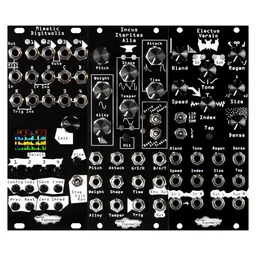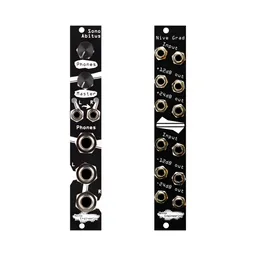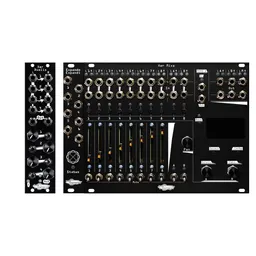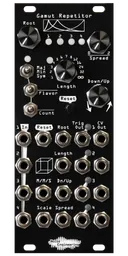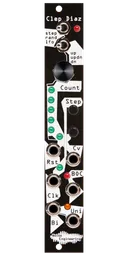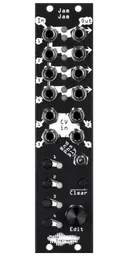Modulation is an important part of nearly every Eurorack patch. In the past, we’ve explored modulators like envelope generators and LFOs, which tend to be predictable in their outcomes. Today, we’ll explore a few types of random signals that can be used as modulators or to trigger events, and bring your patches to life.
A classic: random-level stepped CV
Probably the most common type of random signal across modular and fixed-architecture synthesizers is the stepped-random CV. Typically, there are three components in a generator of this sort. An audio-rate noise oscillator creates random voltages, which is run into a sample and hold. The sample and hold can be triggered by either a clock generator or other trigger/gate source, and each time it’s triggered it will output a new random static voltage, based on the value the oscillator outputs.

Random signals like these are an excellent choice for creating slight timbral variation. For example, multing the trigger signal for a synth voice to also trigger the sample and hold will also generate a random voltage each time there is a new note played, which can in turn be used to modulate something like a filter frequency or wavefolder amount. Attenuating the random signal is useful for creating small variations that add to a patch but aren’t distracting.
In the above patch, the sample and hold module can be replaced with a quantizer to create random quantized CV. An attenuator and offset placed before the quantizer can be used to constrain and transpose the generated CV into the desired range:

Dedicated modules for generating random quantized CV also exist. For example, the Doepfer A-149-1 (in turn inspired by the Buchla Source of Uncertainty) creates random semitone and octave signals when triggered with a parameter to choose a range of the output. Our Gamut Repetitor takes the concept a step further, allowing random sequences to loop and offering options for scales and note range.
Smooth random
Another type of random signal is the smooth random. This type of signal is similar to an LFO, but is not a repeating shape like a sine wave. Generally, the output will look similar to that of a noise generator, but much slower.
Our Clep Diaz in LFO mode, and the Make Noise Wogglebug, are two examples of modules that can create smooth random signals.
Random gates and triggers
While random CV signals are useful for modulation, randomized gates and triggers can be equally useful for triggering events in your patch.
There are a few ways to create random triggers. Many trigger and gate sequencers have probability settings, which change the likelihood that a step will output a trigger (or not). Probability modules, like our Jam Jam, can process trigger and gate signals, randomly deciding whether or not to output a trigger received at the input.
There are also trigger sources that output triggers completely randomly. Some are even based on things like radioactive events – truly random!
Suggested modules
If you need some randomness in your life, here are some of the modules we mentioned in this post.
Noise Engineering Clep Diaz: a multimode smooth/stepped random voltage generator
Doepfer A-149-1: A random quantized/unquantized voltage generator. Its expander can generate random triggers, too.
Make Noise Wogglebug: a collection of random signal generators.
Noise Engineering Jam Jam: a trigger processor capable of randomizing gate or trigger sequences, as well as modifying clock signals and delaying events.
